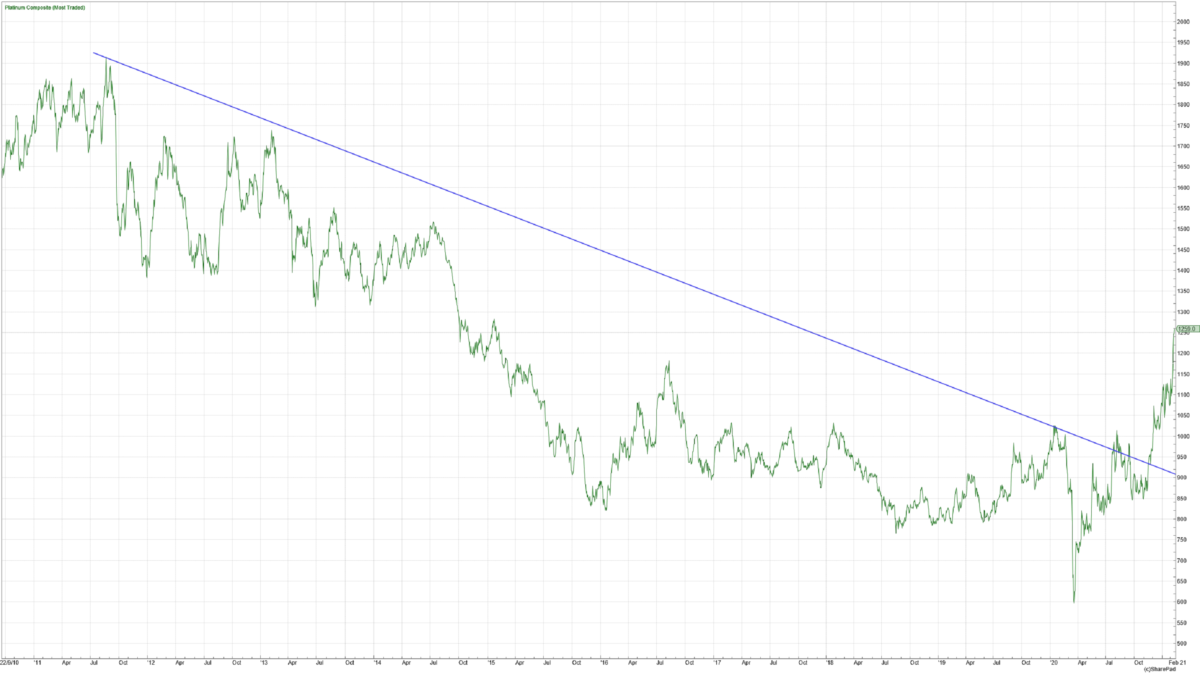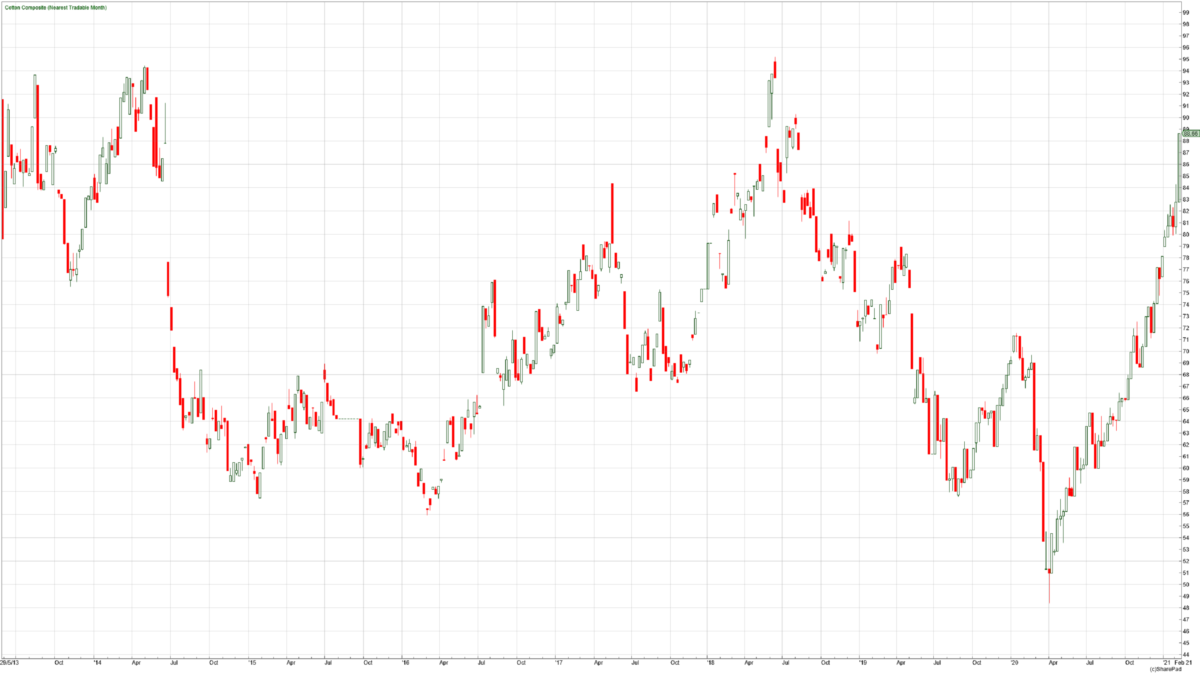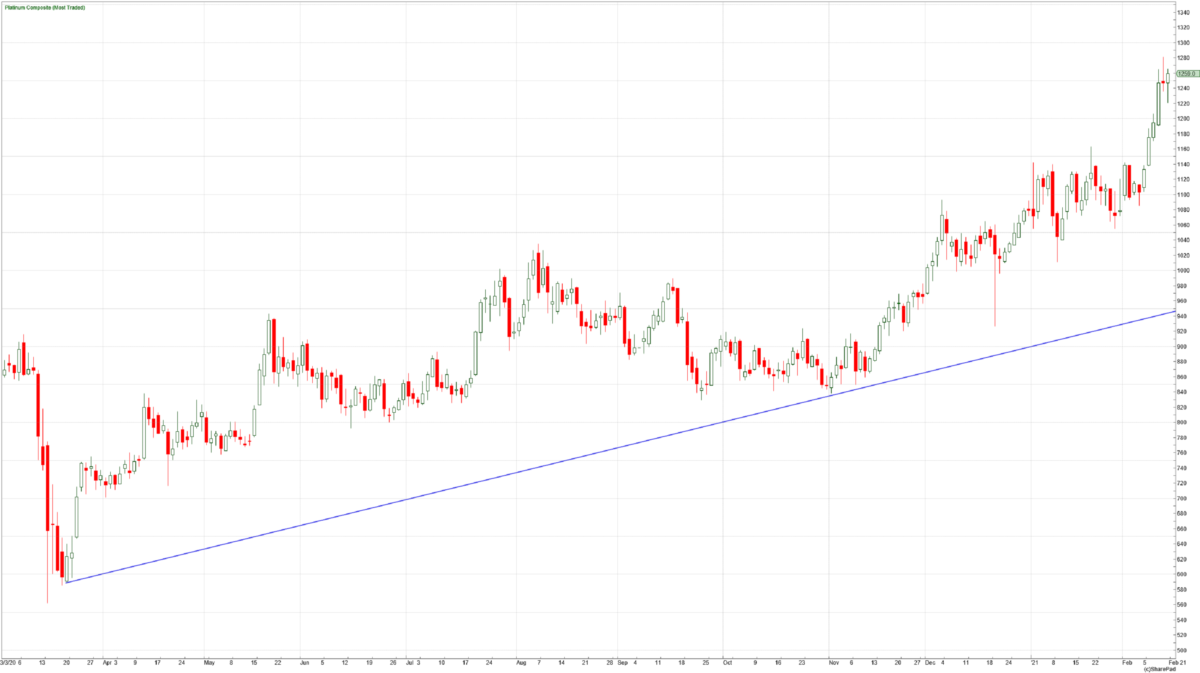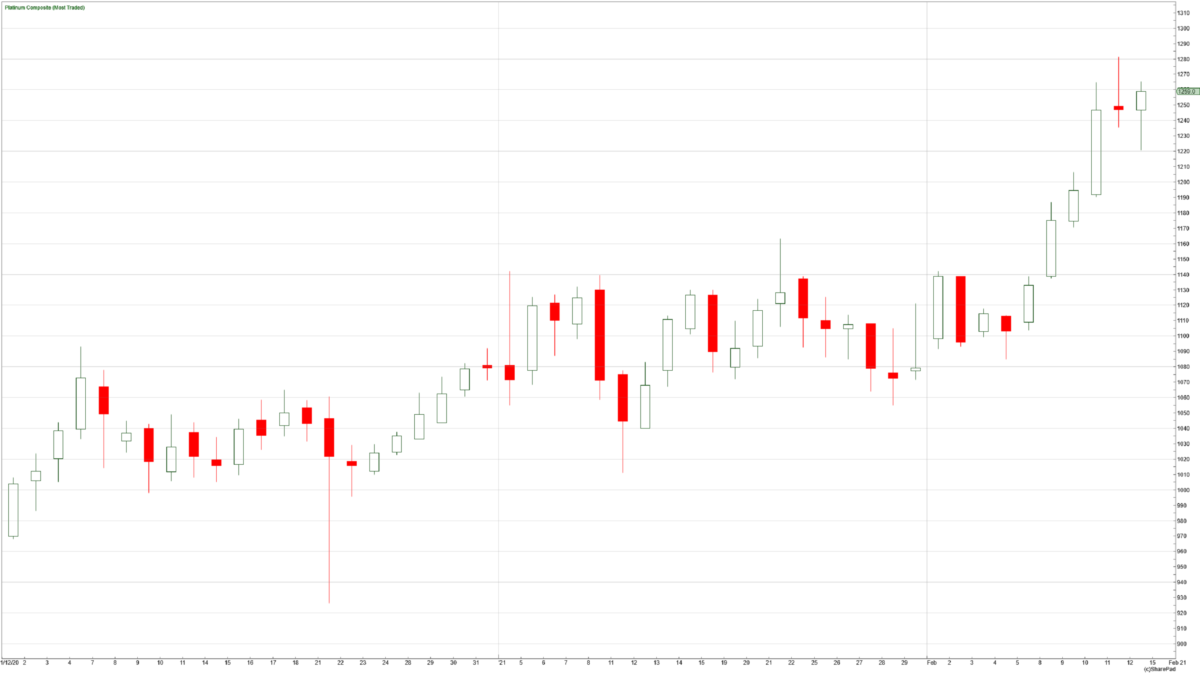Is 2021 Set To Be The Year Of The Great Commodities Bull Run?

One of the great things about spread betting is the wide range of markets you have access to as a trader. Whether it is foreign exchange such as the pound versus the dollar, indices like the FTSE or metals such as gold, all of these markets are freely available and often tradeable 24 hours. But despite a smorgasbord of assets, most private investors and traders tend to stick to the same old markets, month in and out. Which means that they can be missing out on a whole world of opportunity – and one such area is that of commodities. As 2021 continues, we are seeing some incredible strength in some often-overlooked markets – so it’s time to take a look at these in more detail, the ways to trade them and try to profit from a bull run in commodities.
What Commodities Are Moving – And Why?
It’s perhaps no surprise that commodities are on the move higher – what isn’t gaining ground at a rate of knots since the Coronavirus lows from last year? But I think these markets tend not to get much mainstream press coverage and hence end up staying off the radar of most new – and not so new – traders. Some of these markets have come a long way already but, if you are to believe the likes of investment giant Goldman Sachs, we are at the start of a “longer structural bull market for commodities”. Let’s take a look at a few examples.

The rise in the price of copper has been so dramatic that during February it traded to its best levels in eight years. It is up around 90% since the March 2020 low – which could make some feel that perhaps it has run far enough for now, although that trend is still strong. There are quite a few reasons behind this impressive run. Increased demand for China as its economy gets back on track – this is always one of the “go-to” reasons whenever we see a commodity market rising! But China is responsible for around half of the world’s copper consumption, so any bounce back in its economy will normally translate into higher prices.
A weaker US dollar is also playing its part with the copper price – and those of other commodities which are usually priced in dollars. The US dollar peaked last year in March as the Covid-19 pandemic really started to grip markets. The greenback was seen as a safe haven and attracted inflows as investors dumped other riskier assets. But then sentiment reversed of course and the world embraced risk once again. Since the March high, the dollar has fallen by more than 10%, helping to fuel the rise of other markets such as commodities.
Plus of course copper plays a big part in the real world of industry – electric vehicles, for example, need large amounts of copper. A broader pick-up in economic and industrial activity usually results in increased demand for copper.

This is another metal that has pretty much doubled since the lows in March – although as can be seen, platinum had been out of favour for many years. The latest surge has pushed it up to a six-year high and once more the effect of a weakened US dollar has played its part. But that is not all the story – a 10% or thereabouts fall in the US dollar does not drive a commodity up by 100%. Industrial demand picking up has helped, as did disruption to the supply of this metal due to the pandemic. Given the strong rises in both copper and platinum, the next difficult decision is whether there is more strength still to come from these markets – whether Goldman is right and we are at just the start of a major bull run.

Just to show this is not just metals markets that are moving, I thought it was worth including the chart of an agricultural commodity. The price of cotton has had a strong post-Corona bounce-back, rising by around 40% since its April low. Dry weather has affected crop yields, having an impact on the supply side. In the US for example, the Department of Agriculture expects its smallest domestic crop for five years. It can be difficult to trade markets like these that have risen so much – it is human nature to think just how much higher can the price go? But as ever with trading, there are opportunities in both directions.
Trading Commodities Is No Different To Other Markets
Whilst every market has its own particular nuances, to me and many others trading commodities does not have to be that different to other assets, such as currencies or indices. There is a price and, as ever, it goes up, it goes down, it goes sideways. These markets do trend and in my experience are no more or less volatile than the more “traditional” asset classes out there. I have picked three markets above – all of which I have traded and still have positions in at the time of writing – but there are still plenty of others e.g., cocoa; palladium; coffee; soybeans. Plenty of retail traders won’t watch these because they have got used to trading the more “mainstream” markets such as foreign exchange. I would humbly suggest you are missing a trick if you are not looking at commodities as a portfolio of markets that can offer trading opportunities. To demonstrate how the approach need not be any different than any other market, let’s take a look at some potential trade set-ups in platinum.

My approach to trading is very much centred around trend following – identifying what looks like a sustainable move in a market, jumping on board and trying to ride it for as long as possible. In recent months this has been a profitable approach in Platinum. It had been rising for a good six months before I got into the trade in October, but since then the trend has persisted. Of course, at the time of writing that trend may already have reached its peak – but the approach of the trend follower is to continue to doggedly follow the major swing until there is a definite signal that it has ended and, famous last words, it does not look like we are there yet.
When it comes to trend trading, as a broad-brush approach there are three different ways a trade could be entered. You could just buy (or sell short) now; wait for a pullback within the trend, or alternatively wait for the trend to move to a new high (or low if in a downtrend) and jump on that burst of momentum.
The most important consideration for me in a trade is where does the stop-loss go? What has to happen in the market to convince me the trend is over and I should be out of the trade? Let’s take a look at the platinum chart in more detail.

At the time of writing the chart shows the past 10 weeks price action for platinum. The ultimate place for a stop loss for me would be the other side of that spike low in December 2020, which is around $925. Looking closer, there was an obvious low in early January at $1,011 that could be more attractive for those who want their stop losses a little tighter. The most aggressive stop loss would probably be the other side of the low in February, before the market started breaking out again – this comes in around $1,084.
When I have decided on the stop, then the only decision is whether to buy now, wait for a pullback or buy into more strength. I have used all three approaches in platinum in recent months – there is no right or wrong way and all have turned out to be profitable (so far) because I have the trend on my side. What you may decide to do will come down to your own perception of risk and how aggressively you want to open new positions and add to existing trades.
Hopefully these ideas about trading platinum – and the other markets covered – have helped you appreciate how there can be plenty of opportunity outside the more regular markets. Commodities do not trend in a straight line up or down all the time – but they can exhibit strong trends when they do start moving. It remains to be seen whether this is the start of a fresh commodity boom but even if it isn’t, these markets can still offer real profit opportunities for short- or medium-term traders.
Comments (0)